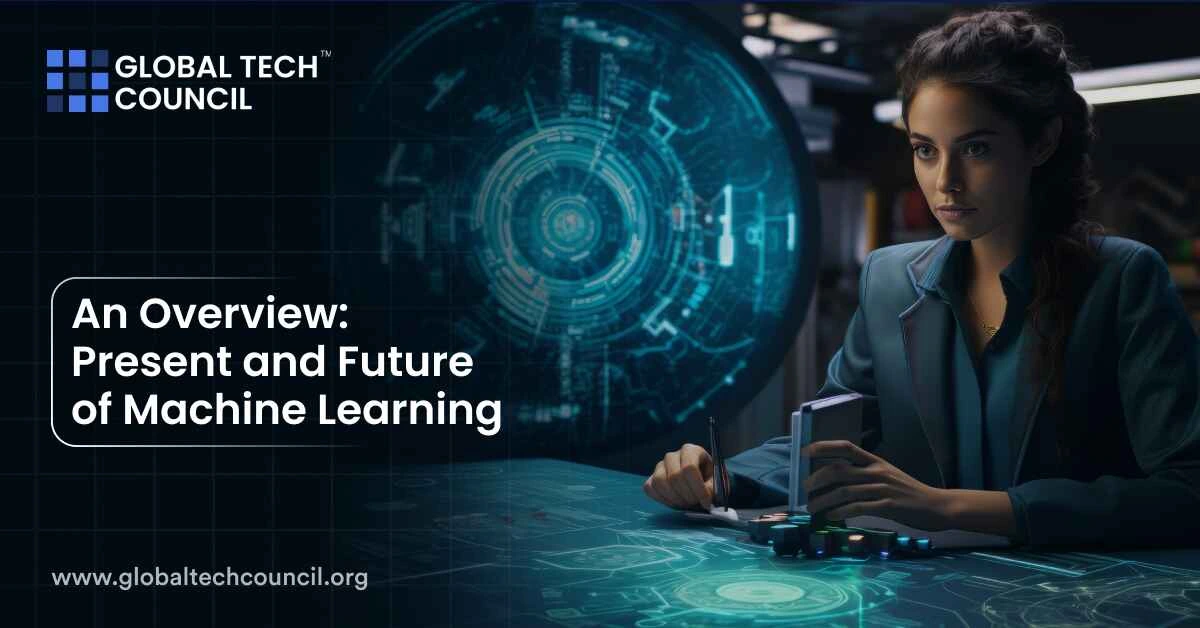
Till now, you may have already understood a lot about machine learning and artificial intelligence. From facial recognition to emojis, machine learning is the core of multiple new innovations made by smartphone companies, tech giants, and software makers.
Fortunately, now, it is not just in books and Jarvis is not the ideal artificial intelligence, machine learning model we look up to. We are very, very close to diminishing the difference in real and artificial. How did we come so far? To answer that, we have explained the history, present, and future of machine learning for beginners.
Learning Of Blog
- History of Machine Learning
- The Present of Machine Learning
o Remember, Face Detection
o Machine Learning Applications
- The Future of Machine Learning
- Conclusion
However, before we dive in and understand how machine learning became so big, let’s see what is the difference in machine learning course and artificial intelligence.
Artificial intelligence is a part of computer science that enables machines to behave like humans without human supervision. Machine learning, on the other hand, is a part of artificial intelligence that enables machines to learn like humans. This is achieved by offering a dataset to the algorithm through which the algorithm learns.
History of Machine Learning
While you may be thinking that machine learning may have started a few years back, it actually dates back multiple decades – specifically the 1950s. This was around the same time when the electronic digital computer was introduced to the world.
Back then, some of the IBM researchers created a program that could learn checkers better with time. This program was designed to understand which moves can offer better outcomes. In the 1990s, the research was finally started on allowing the computer systems to accept large datasets and predict the patterns from this data. These learnings revealed amazing results. For instance, IBM’s computer defeated Garry Kasparov at chess. Amazing, right?
The Present of Machine Learning
Here are the common applications of machine learning that we utilize in our daily life today:
- Google, Bing, and other similar search engines
- Cortana, designed by Microsoft
- Virtual assistants like Siri, Alexa, etc.
- Self-driving cars
- Spam detector
- Photo tagging on Facebook
- Fraud detection
- Language translate on Google
Machine learning is not always as big as we think it can be. Even small inventions that we utilize on a daily basis have machine learning ingrained in its core.
Think about it, every smartphone has multiple machine learning applications. Take the iPhone, for example. From Hello Siri to face recognition, all these inventions use ML. However, these APIs only predict the available user data. You can’t enable these APIs to learn from your actions. This is because the training of an ML algorithm happens on a server, where there are multiple GPUs. And this process takes time. If you train an algorithm on a strong server, it may take multiple days. On a computer, it will take multiple weeks. And it might take forever on a mobile device.
You can understand the difference in this processing through a machine learning course or a machine learning certification.
Remember, Face Detection
Now, you may be thinking that the face detection model also needs too much computing power. Then, how your mobile phone is able to achieve it?
True, mobile phones don’t have the capability to power this feature, which is why training of the API happens on the server farm. The improvements are released in the updates of the application.
Machine Learning Applications
Some more machine learning-based inventions and innovations:
- On your iPhone, your keyboard is made to learn. As you type, you will see that your keyboard makes suggestions. These suggestions are not the same for every person. It is specifically learned from your habits and your frequently used words.
- The photo recognition is carried out in your gallery and pictures related to one person are organized in an album. This feature uses face recognition API.
- We already know about-face and touch IT. Even if you come in front of the camera wearing your sunglasses, your phone will still recognize it’s you.
- Apple Watch is the best example of motion detection. It practically judges your heartbeat.
The Future of Machine Learning
We have come a long way with this technology and machine learning certification can help you become a part of this journey.
Google has created a Smart Reply model. This model processes the message and creates a reply. Till now, the training of this model is not yet completed. But, Google believes that if this model is trained properly, even on user texts, it can offer impeccable results. There are endless possibilities of machine learning in the future, which is why machine learning for beginners is also becoming extremely popular. From being able to use a self-driving car to receive ads as per your preferences and ad-viewing habits, everything will be modified. We are about to enter a world where machines would analyze our every move and offer a feasible, less hectic environment.
Conclusion
Machine learning has evolved a lot. From just a small program to a big landscape made of ML, we have come a long way. And this is not going to stop here, machine learning will grow in the future. Hence, completing a machine learning course or machine learning certification may be the best route for beginners.
Leave a Reply